#hypacrosaurus
Explore tagged Tumblr posts
Text
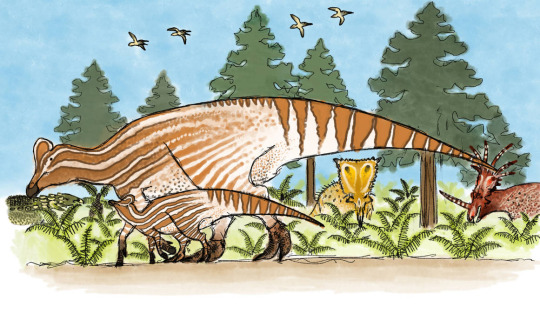
Mother and Son’s Day Out, Dinosaur Park Edition
#hypacrosaurus#hadrosaur#hadrosaurs#late cretaceous#campanian#ceratopsians#ceratopsian#chasmosaurus#styracosaurus#edmontonia#dinosaur park formation#cretaceous#paleoart#dinosaur#dinosaurs#paleontology#palaeontology#paleontology art#ornithischian#ornithopod#ornithischians#ornithischia#paleobiology#paleoblr#palaeoblr
494 notes
·
View notes
Text
daily vivosaur 86
genus: hypacrosaurus
a hadrosaur nearly as large as tyrannosaurus. pacro is a maternal vivosaur with a full set pf healing skills, its team skill even heals the LP of all allies on the field

#my art#paleoart#paleo art#dinosaur#hypacrosaurus#fossil fighters#3d art#low poly#low poly art#blockbench
36 notes
·
View notes
Text
Hypacrosaur Rizz.

20 notes
·
View notes
Text
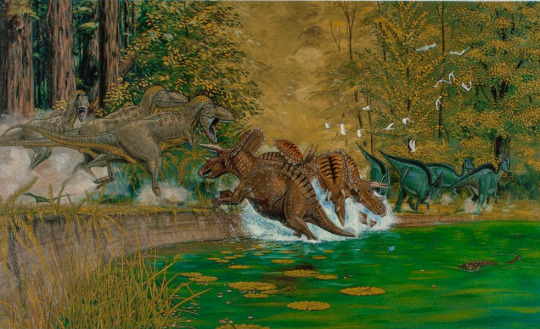
Anchiceratops ornatus, Hypacrosaurus altispinus and Albertosaurus libratus by Gregory Paul. From Terra: The Member's Magazine of The Natural History Museum of Los Angeles County. Volume 24, No. 3. January/February 1986.
Internet Archive
#prehistoric#dinosaurs#ceratopsians#anchiceratops#hadrosaurs#hypacrosaurus#theropods#albertosaurus#Gregory Paul
242 notes
·
View notes
Text

A fossilized vertebra of an indeterminate hadrosaur or duck-billed dinosaur from the Horseshoe Canyon Formation in Drumheller, Alberta, Canada. There are currently multiple species of hadrosaurs from this deposit including Edmontosaurus regalis, Hypacrosaurus altispinus, and Saurolophus osborni. Unfortunately, the presence of multiple genera make identification of isolated vertebrae difficult, if not impossible to narrow down to any particular taxa. This specimen comes from the old collection of the late John Hearty of Glasgow, England who obtained it from the late Betty Spiers around the late 1970s to early 1980s. This specimen was originally labeled as the tyrannosaurid Albertosaurus sarcophagus, but the specimen most certainly belongs to a hadrosaurid.
#dinosaur#fossils#paleontology#palaeontology#paleo#palaeo#edmontosaurus#hypacrosaurus#saurolophus#hadrosaur#ornithopod#ornithischian#cretaceous#mesozoic#prehistoric#science#paleoblr#エドモントサウルス#ヒパクロサウルス#サウロロフス#ハドロサウルス科#恐竜#化石#古生物学
8 notes
·
View notes
Text

hypacrosaurus altispinus - hadrosaur - late cretaceous
this handsome fella was named for the tall neural spines that make up the meaty hump on his back! fossilized nests of hypacrosaurus show they grew about as fast as todays ratites (i.e ostriches, emu, cassowaries) in order to outpace their tyrannosaurid predators! sub-adult tyrannosaurs Probably weren't too keen on getting crushed by 4 tonnes of Beast.
higher resolution version under the cut!
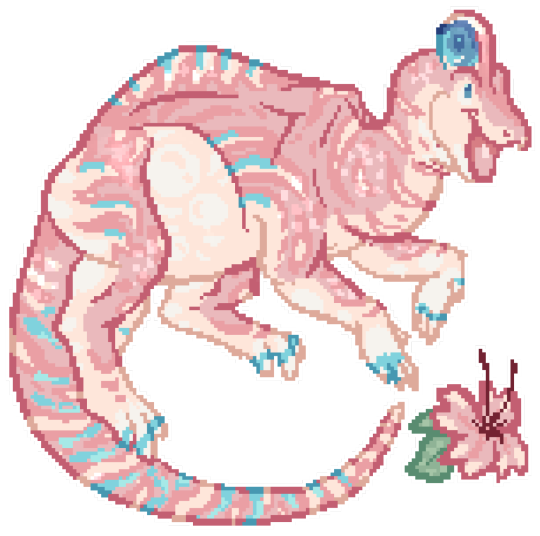
#paleoblr#paleoart#hadrosaur#hypacrosaurus#5/18/23#taking away the 7pm est timer because i simply dont have the time D: but The Him <3#hes shedding early for pride month!!! simply cannot contain the joy and i love him for that#unintentional pallette but i think its Very pretty. pink and blue are just a nice combo wht can i say#dinosaur
60 notes
·
View notes
Note
trick or treat!
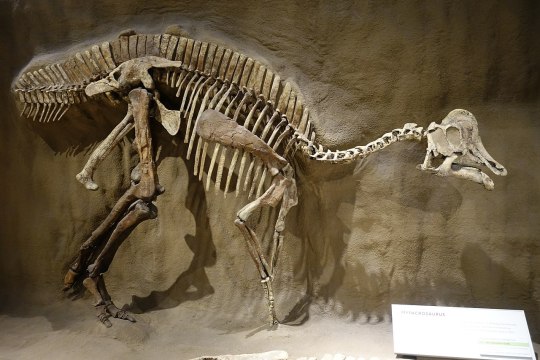
Hypacrosaurus!
22 notes
·
View notes
Text
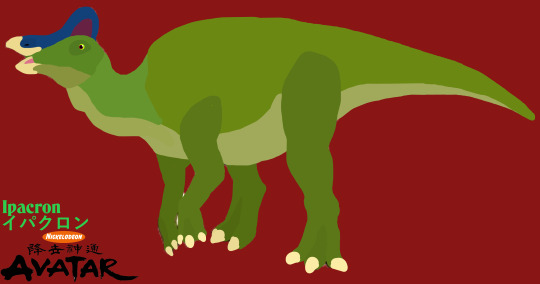
Ipacron
Altura: 135 metros (en 4 patas)
Longitud: 540 metros
Peso: 70,000 toneladas
Primer Avistamiento: Fiordos de Kenai [Tierra: Teratoverso]
Controles: Tierra Control [Excavación, Embestida Petrea y reforestación] Fuego Control [Rayo Incandescente y rafaga ignea]
Guarida: Fiordos de Kenai [Tierra:Teratoverso] Monte Makapu [Avatarverso]
Aspecto: Corythosaurus (Dino Rey)
Aliados:
Humanos: Aang, Katara, Soka, Iroh, Zuko, Toph
Kaijus y otras bestias: Godzilla, King Kong, Mothra, Rodan, Anguirus
Enemigos:
Humanos: Ozai y Azula
Kaijus y otras bestias: Kasai Rex
#avatar aang#avatar: the last airbender#avatarverse#kaiju#tokusatsu#sega#dinosaur king#hypacrosaurus
1 note
·
View note
Text

Daspletosaurus is a genus of tyrannosaurid dinosaurs that lived in Laramidia during the Late Cretaceous Period, approximately 77 to 74.4 million years ago. The name Daspletosaurus means "frightful lizard," reflecting its formidable nature as a large bipedal predator. Fossils of the type species, D. torosus, have been found in Alberta, Canada, while another species, D. horneri, has been discovered in Montana, USA. Some researchers propose that D. wilsoni represents an intermediate species between the two, evolving through anagenesis, though further studies are needed to confirm this hypothesis.
Daspletosaurus was closely related to Tyrannosaurus rex, though it was slightly smaller, measuring 8.5 to 9 meters (28 to 30 feet) in length and weighing 2 to 3 metric tons. Like other tyrannosaurids, it had small but powerful forelimbs, though they were proportionally longer than those of T. rex. As an apex predator, Daspletosaurus likely preyed on large herbivorous dinosaurs such as Centrosaurus and Hypacrosaurus. In some regions, it coexisted with another tyrannosaurid, Gorgosaurus, though evidence suggests they occupied different ecological niches.
Despite being less common than other tyrannosaurids, Daspletosaurus fossils provide valuable insights into its biology, social behavior, and life history. Some specimens show signs of injuries and healed wounds, suggesting that individuals may have engaged in intraspecific combat. The discovery of multiple individuals in close proximity has led to speculation that Daspletosaurus may have exhibited pack behavior, though this remains debated among paleontologists. Its role in the ecosystem, interactions with other species, and evolutionary significance continue to be subjects of ongoing research.
#art#drawing#illustration#sketch#artwork#artist#creature#creature art#prehistoric#extinct#paleofauna#paleoart#paleontology#dino#dinosaur#daspletosaurus#tyrannosaurid#tyrannosaur#reptile#theropod
47 notes
·
View notes
Text
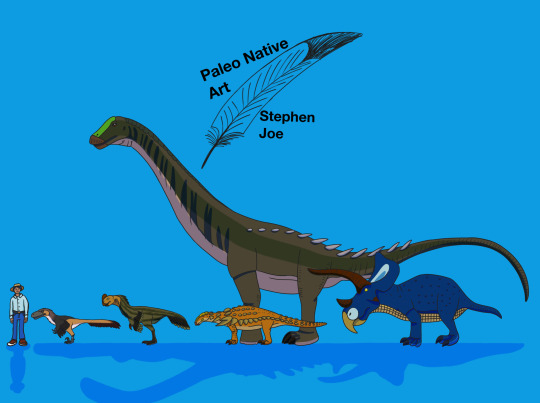
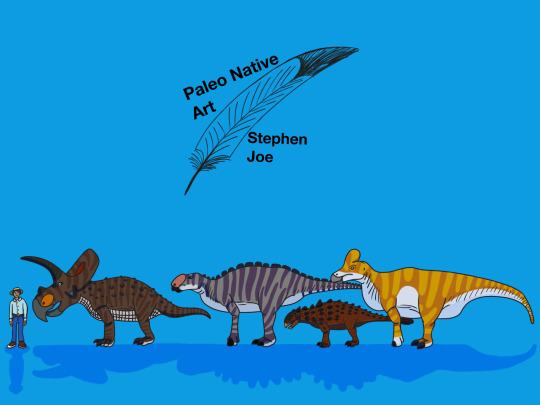

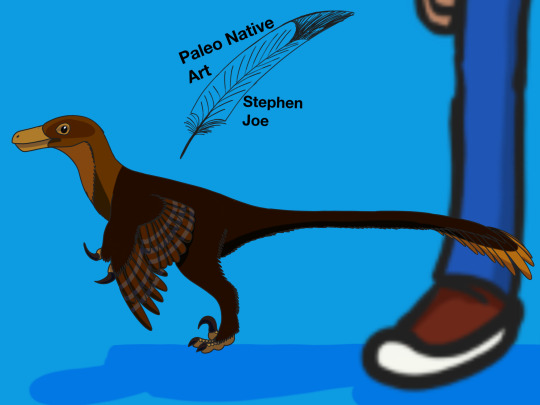
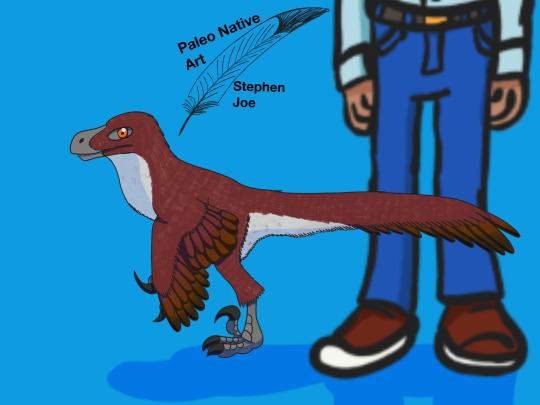
The Dinosaurs of the Ojo Alamo formation
Time for more to make a non-avian dinosaurs of the late Cretaceous period set in the heart of San Juan county, New Mexico. In fact, it’s very similar to northern laramidia such as Hell creek formation with subtropical warm and humid climate, and Lance formation with bayou environment. But unlike two other formations, Ojo Alamo formation has a lush floodplain dominated by wetlands and riparian forests. Home to the fossilized Cretaceous fishes, amphibians, turtles, squamates, crocodilians, and mammals.
As for the non-avian dinosaur species themselves, there were 5 species are officially valid (but one of them is possibly a nomen dubium). The rest however are indeterminate and unnamed species.
From left to right:
* Dineobellator notohesperus
* Ojoraptorsaurus boerei (nomen dubium as of 2025)
* Glyptodontopelta mimus
* Alamosaurus sanjuanensis
* Ojoceratops fowleri
As I said before, along with the other species of naashoibito member, they were unnamed or confer (Cf) other species of non-avian dinosaurs that were yet to describe.
From left to right (Herbivores side & Carnivores/Omnivores side)
* Ceratopsidae indet (An torosaurus-like chasmosaurine indet.)
* Hadrosauridae indet (Originally attended as Kritosaurus navajovius, but now its unknown species as “kritosaurini” indet.)
* Ankylosauridae indet (Noted as being similar to Ankylosaurus and Euoplocephalus.)
* Lambeosaurini indet (Noted as being similar to Corythosaurus and Hypacrosaurus.)
* Richardoestesia sp. (A few isolated teeth specimens.)
* Dromaeosauridae indet (An isolated teeth of the Saurornitholestinae indet similar to acheroraptor, but not as sharp as the latter.)
* Troodontidae indet (Isolated teeth specimens.)
* Ornithomimidae indet
* Tyrannosauridae indet (Formerly known as “Alamotyrannus brinkmanni.” Either Cf. Tyrannosaurus sp or possibly a new taxon species that is similar to Bistahieversor as closely related.)
For last but not surly least, it’s a same navajo man from my previous old art is back as sized scale for larger and smaller scale projects.
But the only these two are still there but ultimately not included were Caenagnathidae indet and Ankylosauria (possibly Nodosauridae) indet, due to both similarities of Ojoraptorsaurus and Glyptodontopelta which are distinct from other species.
Used skeletons of different species as references, belongs to Scott Hartman, Fadeno, GetAwayTrike, Jaime A. Headden, LancianIdolatry, Greg S. Paul, and Henry Sharpe Art.
#my art#myart#dinosaur#paleoart#my drawings#dinosaurs#dinosauria#ojo alamo formation#late cretaceous#theropod#sauropod#ornithischians#naayéé#navajo#sketchbook app#artists on tumblr#paleontology#fossil friday
12 notes
·
View notes
Text
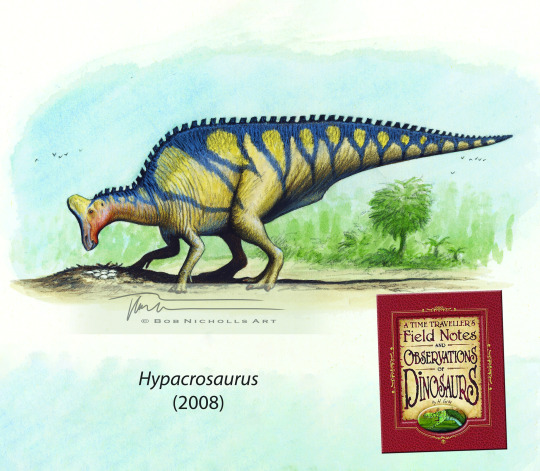
My 25 years of palaeoart chronology...
This is the last day of illustrations from the 2008 book A TIME TRAVELLER'S FIELD NOTES AND OBSERVATIONS OF DINOSAURS (by Top That!). Here is Hypacrosaurus.
#Art#Painting#PaleoArt#PalaeoArt#SciArt#SciComm#DigitalArt#Illustration#Dinosaurs#Birds#Reptiles#Palaeontology#Paleontology#JurassicPark#JurassicWorld
39 notes
·
View notes
Text

Happy Mother’s Day 2025! A female Maiasaura provides a mouthful of ferns for her hatchlings to eat as her mate watches from behind. Maiasaura peeblesorum was a hadrosaur from the Campanian-aged Two Medicine Formation of North America that gained widespread fame and recognition as the first large-bodied dinosaur known to have practiced parental care after its nests and eggs with embryos inside were found in the 1970s at the height of the ground-breaking Dinosaur Renaissance. It soon turned out that, as with other archosaurs such as crocodilians, parental care was a widespread feature among dinosaurs, including birds, as evidenced by the discoveries of eggs and hatchlings belonging to the hadrosaur Hypacrosaurus, the early Jurassic prosauropod Massospondylus, ceratopsians such as Psittacosaurus and Protoceratops, the oviraptorid theropods, and many others.
#paleoart#dinosaur#paleontology#dinosaurs#palaeontology#palaeoart#dinosaur art#maiasaura#hadrosauridae#hadrosaurs#two medicine formation#adzarchid#happy mother's day#mothers day#mother’s day#mother’s day 2025#happy Mother’s Day 2025
81 notes
·
View notes
Text

Artist Esther van Hulsen
Hypacrosaurus hatchling
4 notes
·
View notes
Text

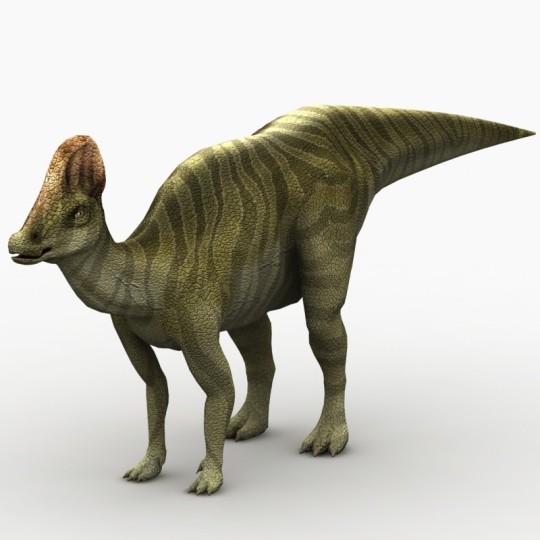

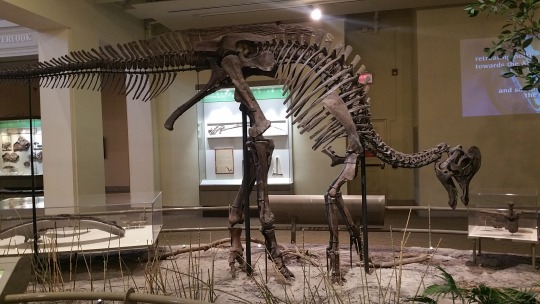

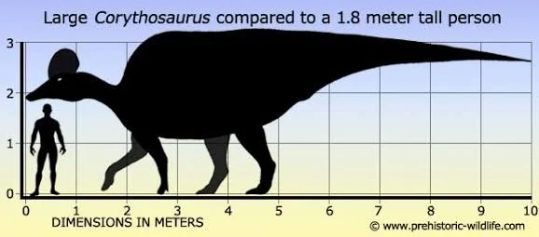
Corythosaurus
(temporal range: 77-75.7 mio. years ago)
[text from the Wikipedia article, see also link above]
Corythosaurus (/kəˌrɪθəˈsɔːrəs/;[1] lit. 'helmeted lizard') is a genus of hadrosaurid "duck-billed" dinosaur from the Late Cretaceous period, about 77–75.7 million years ago, in what is now western North America. Its name is derived from the Greek word κόρυς, meaning "helmet", named and described in 1914 by Barnum Brown. Corythosaurus is now thought to be a lambeosaurine, thus related to Lambeosaurus, Nipponosaurus, Velafrons, Hypacrosaurus, and Olorotitan. Corythosaurus has an estimated length of 7.7–9 metres (25–30 ft) and has a skull, including the crest, that is 70.8 centimetres (27.9 in; 2.32 ft) tall.
Corythosaurus is known from many complete specimens, including the nearly complete holotype found by Brown in 1911. The holotype skeleton is only missing the last section of the tail and part of the front legs, but was preserved with impressions of polygonal scales. Corythosaurus is known from many skulls with tall crests that resemble those of the cassowary and a Corinthian helmet. The most likely function of the crest is thought to be vocalization. As in a trombone, sound waves would travel through many chambers in the crest and then get amplified when Corythosaurus exhaled. One Corythosaurus specimen has even been preserved with its last meal in its chest cavity. Inside the cavity were remains of conifer needles, seeds, twigs, and fruits, suggesting that Corythosaurus probably fed on all of these.[2]
The two species of Corythosaurus are both present in slightly different levels of the Dinosaur Park Formation. Both still co-existed with theropods and other ornithischians, like Daspletosaurus, Brachylophosaurus, Parasaurolophus, Scolosaurus, and Chasmosaurus.
3 notes
·
View notes
Text
How to Preserve and Care for Hypacrosaurus Fossils
Fossils can be neat little remnants of the past that allow for an interesting peek into what prehistoric life used to be like. Hypacrosaurus fossils exemplify some of the most interesting wonders preserved in stone because of their striking structure and historical importance. read more: https://fossilagemine.livejournal.com/431.html

0 notes
Text
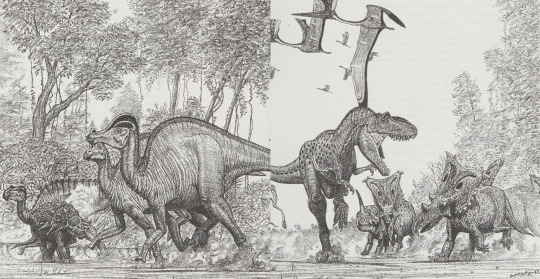
Predatory Dinosaurs of the World: A Complete Illustrated Guide. Written and drawn by Gregory Paul. 1989.
Internet Archive
#prehistoric#dinosaurs#theropods#tyrannosaurs#daspletosaurus#ornithopods#ceratopsians#monoclonius#chasmosaurus#hadrosaurs#hypacrosaurus#kritosaurus#ankylosaurs#edmontonia#prehistoric reptiles#pterosaurus#quetzalcoatlus#predation#Gregory Paul
87 notes
·
View notes